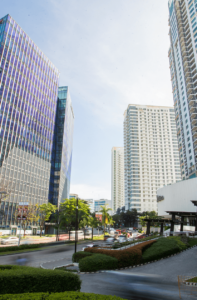This article was first published in BusinessWorld on December 3, 2019. Banner photo from besaphil.com.
ON OCT. 31*, Cebu City secured the title of being the country’s first UNESCO Creative City of Design, and the second UNESCO Creative City title went to Baguio City, a UNESCO Creative City of Crafts and Folk Art since 2017. With this recognition, Cebu joins Baguio in the UNESCO Creative Cities Network (UCCN), now numbering 246 cities around the world. These Creative Cities comprising the UCCN are differentiated into seven creative fields, namely: crafts and folk art, literature, film, music, gastronomy, media arts, and design. Together, they commit to placing creativity at the core of their sustainable urban development plans. Creativity as a strategic development pillar emerges from the city’s unique culture, as represented by its outstanding creative field. This creative field, foreseen to encourage viable cultural and creative industries, is to serve as a catalyst for the city’s creative economy, embedded in a more or less cohesive social environment as indicated by cooperation among civil society associations and groups with their citizen-members as cultural purveyors wherever they are in the public and private sectors.

If consensus on an ideal Creative City is reached, the next step is planning to realize it. Gleaning from events happening in Cebu and Baguio now, there are at least two considerations. First, these two cities’ respective plans will ultimately be original, yet share some things in common with their global co-members in the UCCN, especially with those grouped in their same creative fields and particularly, with those in the Asian region. And second, there will be similarities and differences in Cebu and Baguio’s plans with their historical trajectories as cities in the Philippines, but in their varying relational or cultural interdependence with their provinces (Cebu and Benguet), their regions (Central Visayas and Cordillera), and with national government.
These two considerations involve navigating the global and national that are further subdivided into political and economic spheres, sub-global and sub-national. A necessary interplay among these levels, spaces or scales where our Creative Cities are embedded is, therefore, presented.
Understandably, local policymakers are beginning policy work on their Creative City as a UNESCO Creative City network hub. Nevertheless, the hub always requires its spokes projecting in and out of it, and thus ultimately, what may also be required is a governance-approach that, aside from being place-based or anchored firmly on local urban communities, is at the same time shaping a city-province/region dynamic supported by higher geographic scales national, sub-global or regional, and global.

DEVELOPING GEOGRAPHIC SCALES
I trace the term geographic scale from the social science discipline of political and economic geography. Political scale, or the idea that scale is socially constructed through politics, was strongly advanced from the latter-1980s and 1990s. Political geographers called attention to how dominant research on globalization was rendering geographic scales as apparently secure, established categories, and as pre-givens merely useful for explaining levels of analysis such as local, national, and global, as if these were an unproblematic, unchanging hierarchy.
Political geographers challenged this perspective by underscoring that geographic scales are not fixed or stationary since they are spaces for economic activities as well as political authority. In a particular social structure, explaining how stakeholders delve into these processes of social construction adds to understanding social change. These theorists in the 1980s and 1990s introduced a constructionist perspective of geographic scale. For example, Delaney and Leitner in their 1997 article, “Political Geography of Scale,” put emphasis on the political and defined geographic scale as a “nested hierarchy of bounded spaces of differing size, such as the local, regional, national and global.” Could there likewise be overlapping hierarchies or otherwise, and of not-so-bounded spaces? Empirical research continues on various societies’ construction of scale.
Here in the Philippines, we have had considerable experience drawing and re-drawing our local political boundaries, including asserting our rights on our nation-state boundaries. As the local or sub-national from Luzon to Mindanao has become generally peaceful, with its territorial subdivisions conflict-free thanks to the work of decades if not centuries, various local development paths are being pursued. The UNESCO Creative City is the latest among such development paths, and this one is based on recognition and respect of local communities’ social, cultural, and economic life. That a local urban community, that is, a city’s culture and creativity, which lends its society and economy its uniqueness may be shared with the world, and there exist mechanisms on how to do this.
Going back to the period 1980s and 1990s, there were scholars from the dominant globalization research who concurred with the work of political geographers. This strand of globalizers acknowledged the importance of space or place and geographic scales utilizing the image of a global network with nodes of place-based, capital-attractive spaces but smaller-space territories below the state in scale, that is, sub-state.
For us Filipinos, familiar examples of these sub-state spaces and scales are economic or export processing zones and call center districts. But there are others that, surely, we can partake — industrial districts, growth triangles, city-regions and growth corridors, among other conceptions of a territorially global economy. They involve “spatialities of globalization,” a concept from British Academy’s Professor Ash Amin, referring to social relations and institutions formed by events in another part of the globe. Yet, daily practices and decisions of local groups enacting these social relations and institutions can have significant global effects, too. We understand this as the global and local shaping and influencing each other but as to what extent is a political question.
With the concept of a global network with nodes and links, economic geographers joined the bandwagon of globalization research when they examined territorial agglomeration of industries, including what were eventually called as “creative industries” that they observed as post-Fordist and thus, a new “creative economy” seeming to be a-forming and tending to cluster in cities — as “creative cities” in the advanced capitalist societies or, the West.
And then, it did not take long for these western concepts to reach our own societies, that is, for these “creative cities,” “creative industries,” and “creative economy” to be introduced to the developing world — our emerging economies with totally different historical trajectories. In our part of the world, we may recognize what they mean yet like a chameleon, they assume other colors. In Indonesia, for example, a sizable number of “creative industries” are actually “traditional cultural industries” and for this, development planning is greatly linked with the region.
Take one 2016 publication in Cities by Elsevier titled, “The location of creative industries in a developing country: The case of Indonesia” by Fahmi et al. This research finds significantly that a distinction has to be made between “creative industries” that are innovative industries utilizing new knowledge and intellectual property, and “traditional cultural industries” that aims for the preservation of heritage values. In terms of spatial patterns, these two also tend to differ. The former is more dependent on urbanization economies than the latter, which are found in regions more rural.
All these doubly underscore the crucial role of geographic scales. Development focus on local city communities as they are formed to become global Creative City hubs, exact on local policymakers the need to discern the specific character of their creative/cultural industries. This includes its spatial scale needs, that is, on whether the industry may be grown well in a city, or more closely with a region or some other dynamic scale combinations. It is governance of scale — how to scale-up, sideways and down — that is, “scalability,” for strengthening the sub-national so it may prosper in a spatial, place-based global economy.#
Dr. May Zuleika Salao is Director of the Political Economy Program at the School of Law and Governance, University of Asia and the Pacific, Pasig City. She is presently in Germany as a Visiting Researcher at the Max Planck Institute for the Study of Societies in Cologne and Scholar of the Hanns Seidel Foundation in Munich, studying city-regions in creative industries.
*The designation came out on October 30, 2019. https://en.unesco.org/creative-cities/events/unesco-designates-66-new-creative-cities
Leave a Reply